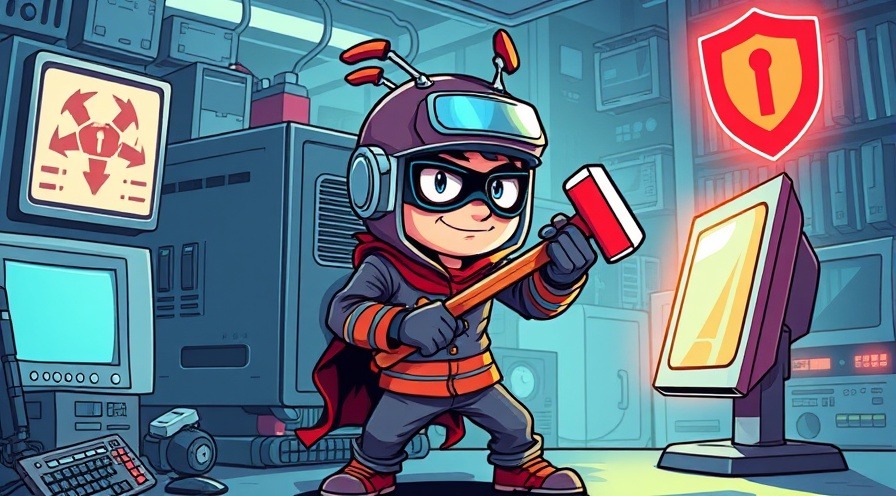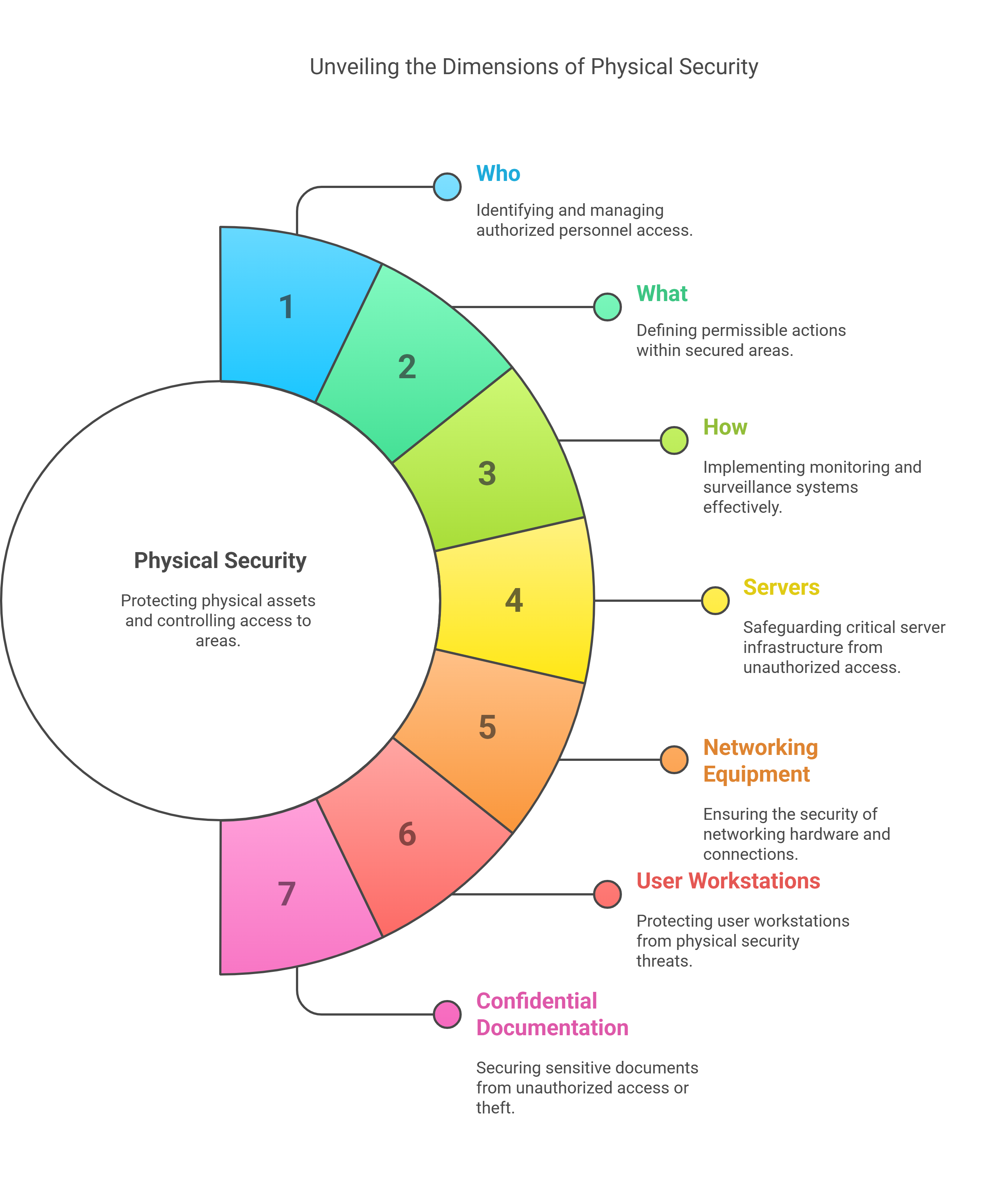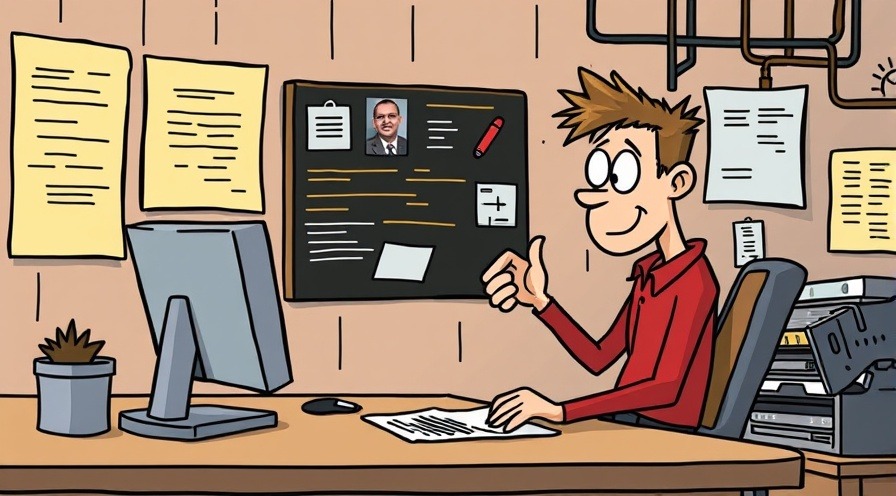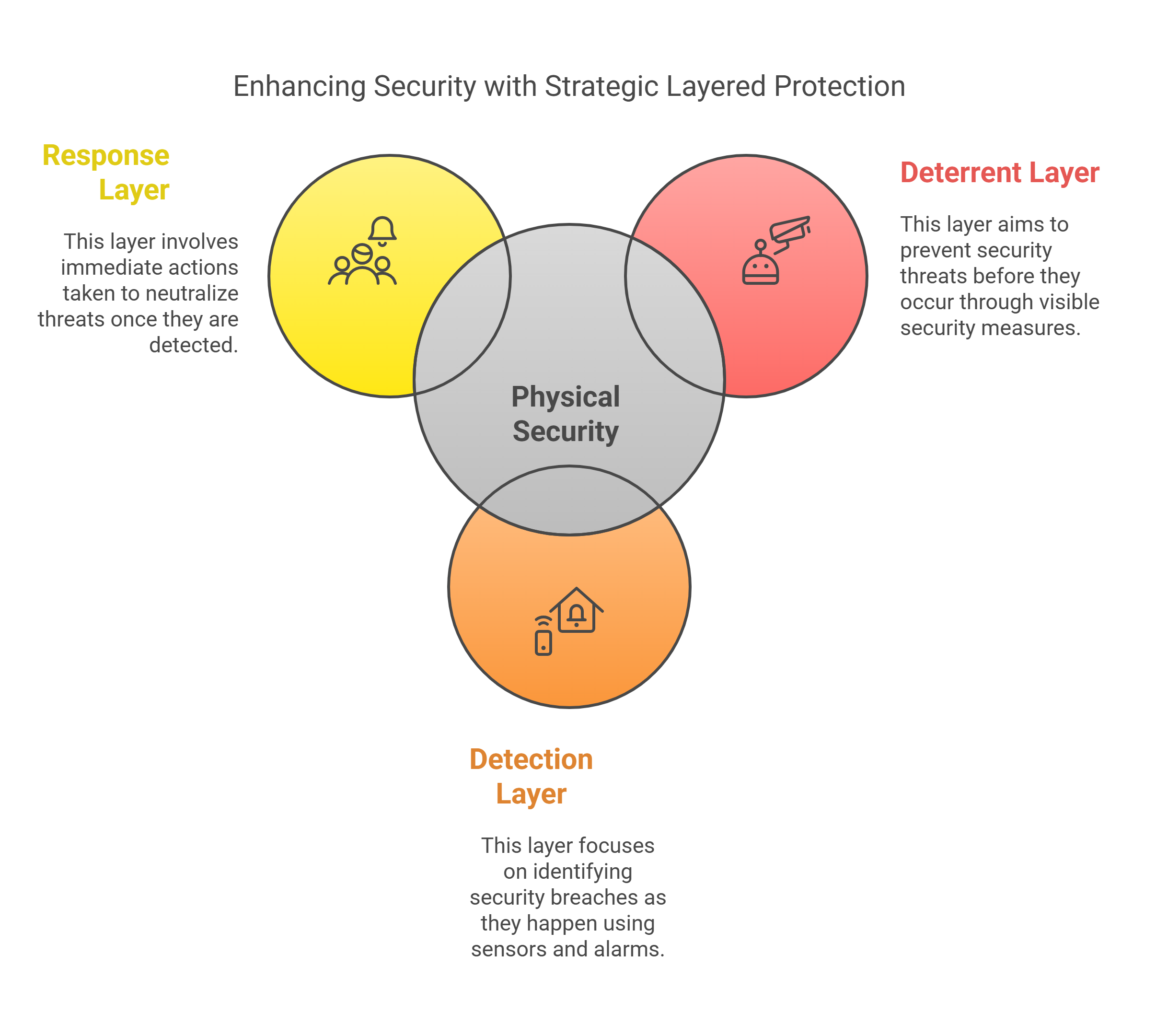
Physical Security for Cyber Nerds: Because Firewalls Can’t Stop Crowbars (SY0-701 – 1.2)
#CompTIASecurityPlus #SY0701 #PhysicalSecurity #CyberSecurityBasics #ITCertsMadeFun #SecurityControls #StudyGuide #CyberDefense #Mantrap #AccessControl #DataProtection
Discover why physical security matters in cybersecurity with this fun, expert SY0-701 guide. Learn key protections, real-world examples, and pro tips that make this topic stick like Velcro.
Why You Should Care About Physical Security (Even If You're a Keyboard Warrior)
You could have the tightest digital defenses since Fort Knox’s Wi-Fi, but if someone can waltz into your server room with a screwdriver and a hoodie, game over.
That’s why CompTIA Security+ SY0-701 emphasizes Physical Security in Objective 1.2: Identify organizational security assessment strategies. It’s not just about cybersecurity—it’s about actual security. The kind with locked doors, surveillance cams, and an office Karen who knows everything that happens on floor two 👀.
"Cybersecurity begins at the physical layer. If you don’t control physical access, you control nothing."
— Kevin Mitnick, “The Art of Invisibility”
Let’s Get Physical (Security): What It Actually Means
Physical security involves controlling who can physically access sensitive areas, what they can do once inside, and how you monitor it all.
It protects:
Servers
Networking equipment
User workstations
Confidential documentation
Coffee machines (okay, maybe not officially—but don’t touch the IT guy’s espresso maker)
Real Talk: Digital Security ≠ Physical Security
People often assume cybersecurity is all digital.
But:
You can’t patch a stolen laptop
A USB drop in your parking lot can ruin your network
And no, putting the server in a locked janitor’s closet doesn’t count as "secure infrastructure"

The 3 Layers of Physical Security You Have to Know
If you’ve ever locked your door, installed a camera, and thought about how fast you’d chase someone with a bat if they broke in—that’s deterrence, detection, and response in action.
Here’s how it breaks down:
1. Deterrence – “Don’t Even Think About It”
The goal here? Scare them off before they even try. This layer is all about discouraging threats through visible, psychological, or physical means.
Fencing, gates, and barriers
Warning signs (like “Smile, you’re being watched 👀”)
Security lighting (because no one commits crimes under a spotlight unless they’re in Oceans 11) 🎥
Security personnel presence
Insight: Most criminals are lazy. Make your stuff harder to access than the next guy’s, and you’ve already won round one.
2. Detection – “Gotcha, Creep”
This is about noticing when someone does try something sketchy. You want systems in place to spot, log, and raise alerts ASAP.
Motion detectors
Alarm systems
Surveillance cameras (CCTV)
Entry logs and badge access tracking
Think of detection like your tech-savvy nosy neighbor: always watching, always snitching—with timestamps.
Insight: Many organizations use video analytics with AI to automatically flag suspicious activity. (Yes, Skynet is watching.)

3. Response – “Now You’re Really in Trouble”
This is where the rubber meets the road. Detection is useless if no one does anything about it. Response refers to the action taken once a threat is detected.
Security guards intercepting intruders
Alarm signals that alert police or on-site teams
Lockdowns or automated barriers activating
Incident reports for forensics and future prevention
In Security+, CompTIA wants you to understand that response is both proactive (like instant lockdowns) and reactive (like filing a security incident report).
“Good security isn’t just about catching the bad guy—it’s about having a plan for when you do.” — Dr. Eric Cole, SANS Institute
That’s the official three-layer cake of physical security for SY0-701: deterrence, detection, and response. All three layers must work together. If you’re missing one, the whole thing falls apart like a $5 folding chair at a BBQ.

Common Physical Security Measures Every IT Pro Should Know
Measure |
Why It’s Important |
|---|---|
Server cages |
Prevent tampering or theft of equipment |
Mantraps |
Ensure only one person enters a secure area at a time |
Security badges |
Authenticate staff movement and track access |
Clean desk policy |
Prevent data leaks via sticky notes and unguarded documents |
Tailgating prevention |
Stop unauthorized folks from sneaking in behind someone else |
Spoiler: Tailgating is fun at football games. Not in your data center.
What CompTIA Wants You to Know (SY0-701 Style)
In the exam, you'll need to:
Recognize the types of physical controls
Understand their purpose in reducing risk
Apply them to real-world risk assessments
Identify weak points in a physical security plan
In other words, they want you to think like a hacker and a building manager. Congratulations, you're now cyber Batman. 🦇
TL;DR – Physical Security Recap
Physical security is your first line of cyber defense.
It includes deterrents (fences), detectors (cameras), and preventions (locks).
It protects your gear, your data, and your job.
Don’t forget it in assessments or on the Security+ exam.
And yes, putting “Do Not Enter” signs on your server room is not enough.
Conclusion: Lock It Down Before It’s Gone
Digital security without physical protection is like a castle with no front gate. You’re just asking for trouble. Whether it’s tailgating intruders, insider threats, or good ol’ fashioned device theft, you must lock it down, monitor it up, and make sure someone’s accountable.
Security+ SY0-701 wants you to think holistically—and physical security is the unglamorous, underappreciated superhero of the entire stack.
Looking for more smart and surprisingly funny guides like this one? Stick around for more breakdowns and maybe a few bad puns about data loss. You’ve been warned!
Tags:
Physical Security, CompTIA Security+, SY0-701, IT Certification, Cybersecurity, Mantraps, Tailgating Prevention, Security Frameworks, Study Guide, Access Control
 Add Row
Add Row  Add
Add 




Write A Comment